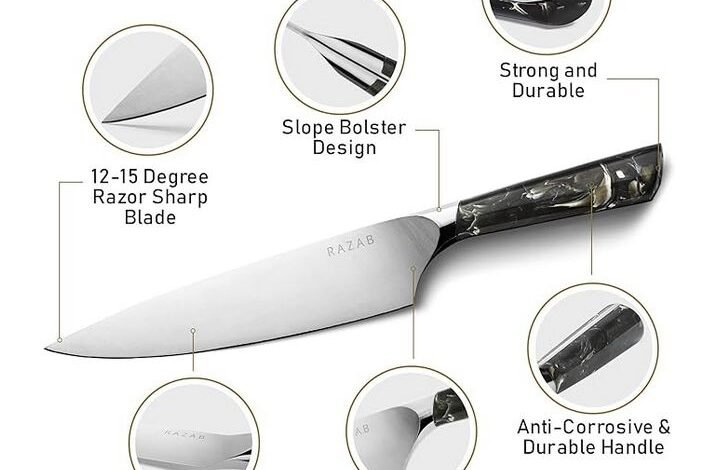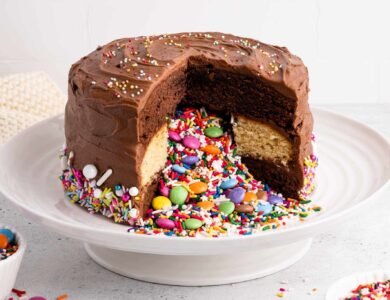Knives: The Chef’s Ultimate Tools for Precision and Artistry

In every professional kitchen, knives stand as the most indispensable tools, shaping the way we create exquisite dishes and present culinary masterpieces. The artistry of food preparation demands precision, and the right knife, handled expertly, allows chefs to transform raw ingredients into refined, mouthwatering dishes. Our discussion today highlights essential knives, their specific uses, and how they are instrumental in professional kitchens around the world.
The Essential Knives Every Chef Needs
A professional chef’s knife collection includes more than just a standard chef’s knife. Each blade has its unique purpose and role in ensuring that food is prepared with accuracy, consistency, and efficiency. Below are the essential knives every chef should have:
1. Paring Knife
The paring knife is a small but powerful tool, ideal for intricate and delicate work. With its short, sharp blade, it is perfect for peeling, trimming, and slicing small fruits and vegetables. It is also frequently used for detailed tasks like garnishing or creating elaborate food presentations. High-quality paring knives, such as those made in Italy and Germany, offer superior control, making them a go-to for precision tasks.
2. Boning Knife
A boning knife is indispensable for butchery, specifically designed to remove bones from meat, poultry, and fish. The slim, flexible blade allows chefs to navigate around bones with precision, ensuring minimal waste and clean cuts. German-made boning knives are renowned for their balance and sharpness, making them ideal for fabrication tasks.
3. Chef’s Knife (French Knife)
The chef’s knife, also known as the French knife, is the workhorse of the kitchen. With a wide, sharp blade, it excels in chopping, slicing, and dicing fruits, vegetables, and herbs. This versatile tool is essential for tasks ranging from mincing garlic to cutting through tough root vegetables. The chef’s knife is often considered an extension of the chef’s hand, making it a critical part of any kitchen toolkit.
4. Slicing Knife
Slicing knives are designed for cutting thin slices of meat, fish, and poultry. With a long, narrow blade, they ensure clean cuts with minimal tearing, ideal for delicate items such as smoked salmon or roasted meats. Japanese slicing knives, known for their thin, razor-sharp blades, are prized for precision cutting, allowing chefs to create beautifully uniform slices effortlessly.
5. Scimitar
The scimitar knife, with its curved blade, is a must for butchery and portioning large cuts of meat. It is particularly useful for trimming fat and cutting steaks from large primal cuts like tenderloins and ribeyes. Brazilian-made scimitars are known for their robustness and durability, ensuring that even the toughest cuts of meat are handled with ease.
6. Serrated Slicing Knife
For tasks that require cutting through items with tough exteriors and soft interiors, such as bread or tomatoes, a serrated slicing knife is the ideal tool. Its saw-like teeth grip and cut through the surface without crushing the food. High-quality serrated knives are crafted in Germany, offering durability and sharpness that lasts.
Crafting Culinary Perfection: Tasks and Techniques
Fruit Carving with a Paring Knife
Creating visually stunning fruit displays is an art, and the paring knife is the tool of choice for this delicate task. Its small size and sharp blade allow for precise cuts, enabling chefs to carve intricate designs into fruits like melons and pineapples. When paired with a serrated knife for larger sections, the paring knife can transform simple fruit into an edible masterpiece, elevating any banquet or buffet presentation.
Precision Butchery with a Slicing Knife
Butchering is a critical skill in professional kitchens, and the right knife can make all the difference. For instance, cutting a large halibut fillet into perfect portions requires a thin, sharp slicing knife. Japanese knives, known for their exceptional sharpness, glide through fish effortlessly, ensuring clean, uniform cuts. Testing the sharpness of the blade by slicing through parchment paper helps guarantee that the knife is at its best, ready for precise cuts every time.
Fabrication of Large Meat Cuts
When portioning large primal cuts of beef or lamb, such as ribeyes or racks of lamb, a combination of the scimitar and boning knife ensures efficiency and accuracy. The scimitar slices through large sections of meat, while the boning knife allows for the removal of bones and trimming of excess fat. Properly fabricated cuts not only ensure uniformity but also enhance the cooking process, resulting in evenly cooked, flavorful dishes.
Vegetable Precision: Julienne and Brunoise
Perfecting knife skills is essential for any chef, and classical vegetable cuts like julienne and brunoise are a testament to a chef’s precision and control. An 8-inch Japanese chef’s knife is ideal for cutting vegetables into uniform, precise pieces. The sharpness of the blade reduces drag, allowing for smooth, clean cuts that are essential in competitions or high-end culinary presentations.
Trimming and Trussing for Perfect Presentation
When preparing cuts of meat for roasting or grilling, presentation matters just as much as flavor. Trimming excess fat and tying steaks or roasts with butcher’s twine ensures that the meat cooks evenly and presents beautifully. The boning knife is perfect for this task, and the scimitar adds finesse to the trimming process. The use of cotton twine for trussing also helps maintain the shape of the meat during cooking, resulting in a visually appealing final product.
Caring for Your Knives: Sharpening and Honing
Knives are an investment, and proper care is crucial to maintaining their performance and longevity. Regular honing with a steel ensures that the edge remains sharp between uses, while professional sharpening, either with a whetstone or an electric sharpener, restores the blade when it begins to dull. A sharp knife is not only safer but also more efficient, requiring less effort to cut through food.
Conclusion
In professional kitchens, knives are more than tools—they are extensions of the chef’s skill and creativity. With the right selection of knives, each designed for specific tasks, chefs can achieve precision, efficiency, and artistry in their culinary creations. From fruit carving to meat fabrication, using the correct knife not only enhances the final product but also ensures that every dish is prepared with care and expertise.
As we continue to refine our techniques and utilize high-quality tools, our knives remain essential partners in creating unforgettable culinary experiences.






